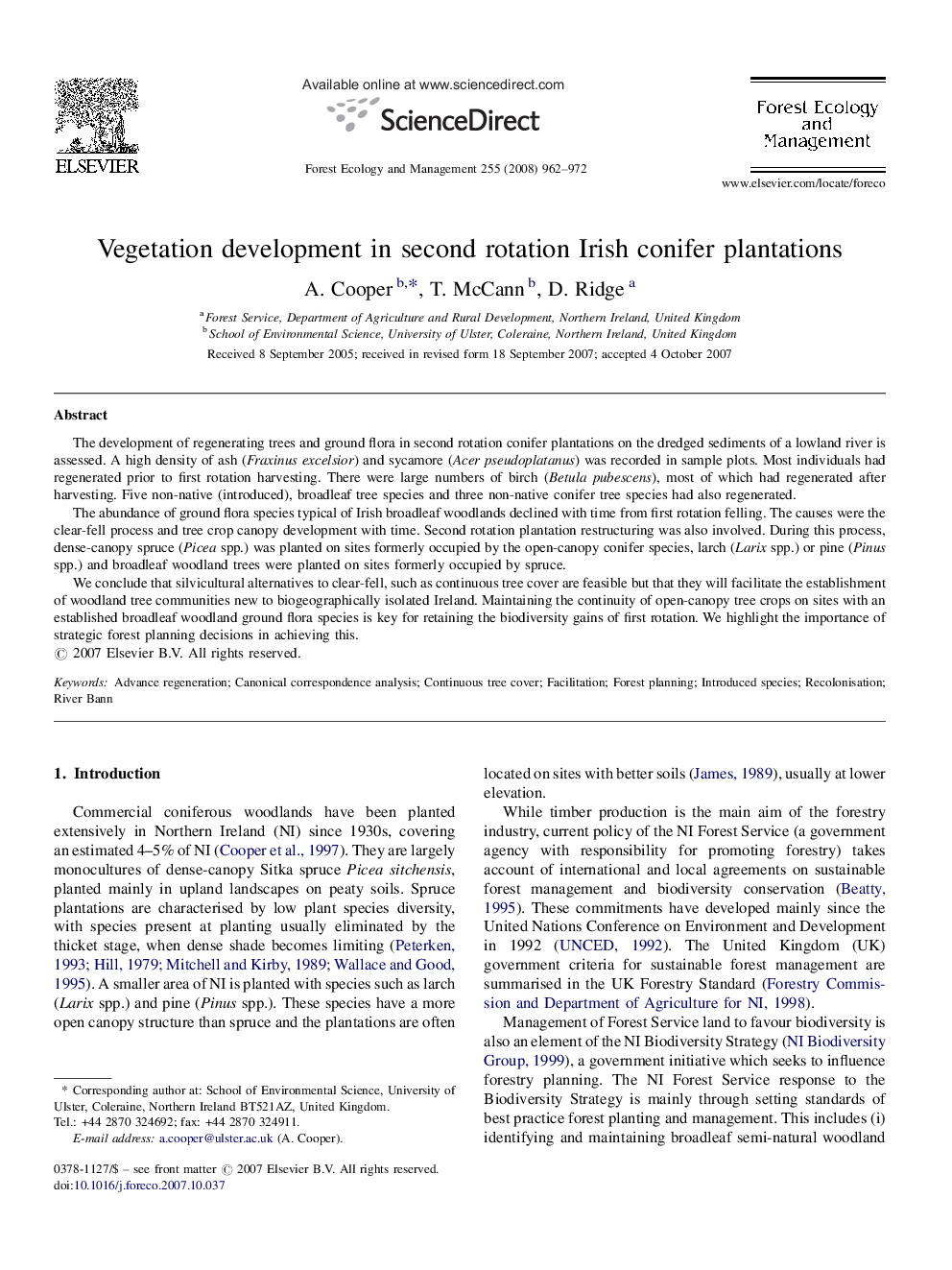| Article ID | Journal | Published Year | Pages | File Type |
|---|---|---|---|---|
| 89874 | Forest Ecology and Management | 2008 | 11 Pages |
The development of regenerating trees and ground flora in second rotation conifer plantations on the dredged sediments of a lowland river is assessed. A high density of ash (Fraxinus excelsior) and sycamore (Acer pseudoplatanus) was recorded in sample plots. Most individuals had regenerated prior to first rotation harvesting. There were large numbers of birch (Betula pubescens), most of which had regenerated after harvesting. Five non-native (introduced), broadleaf tree species and three non-native conifer tree species had also regenerated.The abundance of ground flora species typical of Irish broadleaf woodlands declined with time from first rotation felling. The causes were the clear-fell process and tree crop canopy development with time. Second rotation plantation restructuring was also involved. During this process, dense-canopy spruce (Picea spp.) was planted on sites formerly occupied by the open-canopy conifer species, larch (Larix spp.) or pine (Pinus spp.) and broadleaf woodland trees were planted on sites formerly occupied by spruce.We conclude that silvicultural alternatives to clear-fell, such as continuous tree cover are feasible but that they will facilitate the establishment of woodland tree communities new to biogeographically isolated Ireland. Maintaining the continuity of open-canopy tree crops on sites with an established broadleaf woodland ground flora species is key for retaining the biodiversity gains of first rotation. We highlight the importance of strategic forest planning decisions in achieving this.
